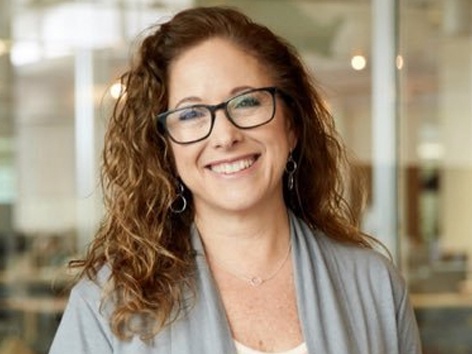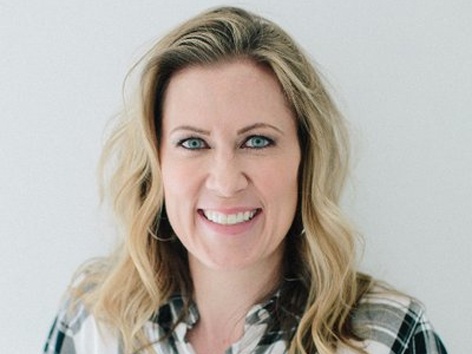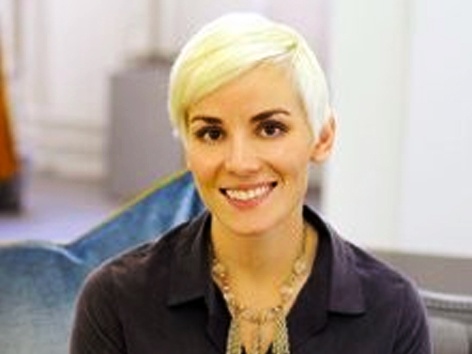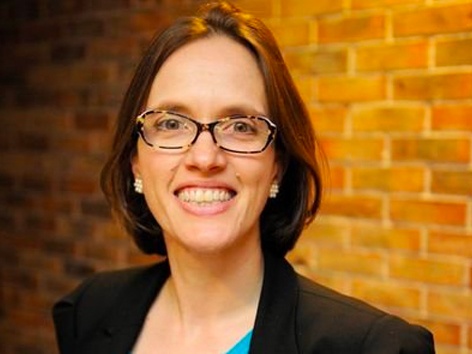Women have long played a pivotal role in the development of computer science. Trailblazers like Ada Lovelace who wrote the first computer algorithm, Grace Hopper who built the first compiler, Ida Rhodes who co-designed the C-10 language and Jean E. Sammet who developed the FORMAC programing language, are just a few examples of women who have enriched the world of computing with their diverse contributions.
The Grace Hopper Celebration Week (GHC) is the largest annual gathering of women technologists and researchers. In line with GHC’s motto of ‘celebrating women in computing’, here is our list of 10 women that are transforming the world of IT Ops, DevOps and Site Reliability Engineering. These women have brought positive change to the world of technology operations and come from a wide variety of backgrounds, including founders, C-level executives and practitioners.
 Julia Austin
Julia Austin Nicole Forsgren
Nicole Forsgren Camille Fournier
Camille Fournier Julia Grace
Julia Grace Kripa Krishnan
Kripa Krishnan Charity Majors
Charity Majors Helen Beal
Helen Beal Jennifer Petoff
Jennifer Petoff Preeti Somal
Preeti Somal Cindy Sridharan
Cindy Sridharan
Julia Austin |
How do you groom the next generation of product managers or product founders who will go on to create game-changing products and startups? Harvard Business School (HBS), the world’s most recognized brand in business education, turned to technology veteran, Julia Austin, to teach their MBA students a two-semester experiential learning course in product management.
Why did HBS choose Julia Austin? With stints as the CTO of DigitalOcean, VP of Innovation at VMWare and VP of Engineering at Akamai, Austin brings a deep understanding of hiring and building technology teams and prioritizing and shipping world-class products. Austin also serves as an advisor to some cool startups like Help Scout, MailChimp and Wistia, where her advice and mentorship should help scale their growth and operations.
Relevant Links
- The Boston Globe - Five things you should know about Julia Austin
- Harvard Business Review - What It Takes to Become a Great Product Manager
- LinkedIn - The War For (Diverse) Teams At Early Stage Companies...and Beyond
Nicole Forsgren |
For all the hype that DevOps has attracted, do we have solid evidence on how DevOps delivers greater IT efficiency and productivity? For starters, elite DevOps teams deployed code 46 times more frequently and recovered 2,604 times faster during an outage as compared to low performers. And, high performing DevOps teams had 7 times lower change failure rates and pushed changes into production 2,555 times more rapidly (source: Accelerate: 2018 State of DevOps report).
As the lead investigator for the annual State of DevOps report, Nicole Forsgren has helped organizations understand how to deliver scalable performance and positive business outcomes with actionable DevOps research. In her recent book Accelerate: The Science of Lean Software and DevOps: Building and Scaling High Performing Technology Organizations, Forsgren shares how the right technical, process and cultural practices can help you become a legendary IT organization. A former business school professor, Forsgren combines academic rigor and practical relevance to help IT teams build DevOps capabilities for superior software delivery.
Relevant Links
Camille Fournier |
As a technology leader, how do you scale your engineering team three-fold and shift from a monolithic to microservices architecture while still delivering a great customer experience? Meet Camille Fournier who did just that as the former CTO of fast-growing startup, Rent The Runway.
Her book, The Manager's Path: A Guide for Tech Leaders Navigating Growth and Change, explains how to hit your goals by setting the right expectations, enhancing collaboration and preventing burnout. Fournier’s book is an excellent guide for software engineering managers who are looking to build cohesive teams, make the right decisions and manage their time wisely.
Relevant Links
Julia Grace |
Who do you recruit to run infrastructure operations for the world’s most popular workplace collaboration tool? With 8 million daily active users, 140 minutes of weekday usage and 500,000 organizations depending on it, Slack turned to Julia Grace (former CTO of Tindie) for delivering a reliable and compelling user experience.
Every time Slack experiences an outage, users post memes on social media on how it is impossible to get any work done without their favorite collaboration tool. To handle Slack’s massive scale, Grace has built a 75-person technical operations team who have come up with innovative solutions for managing the company’s infrastructure. As Slack becomes the default communications hub for most organizations, Julia will be making sure that Slack has the right foundation to meet the demands of its fast-growing customer base.
Relevant Links
Kripa Krishnan |
Have you ever wondered if you can access Gmail when a meteor hits San Francisco? Or, be able to check Google Maps for safe zones if aliens decided to take over our planet? To prepare for such black swan events, companies like Google, Netflix, LinkedIn and Twilio use the principles of chaos engineering to run "thoughtful, planned experiments that teach how systems behave in the face of failure."
Kripa Krishnan is Director of Cloud Product Operations at Google, where her job is to make sure that Google's services never go down. Krishnan heads the Disaster Recovery Testing (DiRT) team, which simulates multi-day disaster scenarios to learn whether Google's systems and processes are resilient in the face of a major incident. The DiRT team injects failures into operational processes to scale incident response and drive recovery for large-scale disasters. All this work and effort from Krishnan’s team will ensure that you can still watch your favorite YouTube cat videos during a zombie apocalypse.
Relevant Links
- Business Insider - Meet Kripa Krishnan, Google's queen of chaos
- USENIX - 10 Years of Crashing Google
- ACM Queue - Weathering the Unexpected
Charity Majors |
How do you make it easier for developers to understand their software in production? You’ll need observability superpowers that make complex systems tractable by deciphering what is truly happening at the code-level.
Charity Majors is one of the driving forces behind the hot new buzzword in town, Observability. Majors is the CEO and co-founder of Honeycomb.io and previously worked as a production engineering manager at Facebook/Parse and systems engineer at Linden Lab. At Facebook, Charity’s team was responsible for all the infrastructure engineering that went into supporting 500,000 mobile apps. And if you’re a database geek, check out Charity’s book, Database Reliability Engineering: Designing and Operating Resilient Database Systems for “designing, building and operating reliable data services.”
Relevant Links
Helen Beal |
Before you issue an enterprise-wide DevOps mandate in your organization, how do you ensure the right team structures and individual alignment? You should heed Helen Beal's advice on “first understanding your current state, articulating your future state and then defining the DevOps implementation roadmap between your present and future states.”
As the DevOps practice lead at Ranger4, Beal supports IT teams in delivering software more predictably with DevOps practices. She also helps DevOps pros build the right skills and competencies in her role as a product owner at the DevOps Institute. Finally, Beal keeps her eye on the latest DevOps trends and tool vendors as the DevOps site editor for InfoQ.
Relevant Links
- DevOps.com - 10 Top Tips for DevOps Cultural Change
- Ranger4 Blog - DevOps in 2018
- SlideShare - How DevOps Drives Organisational Change
Jennifer Petoff |
How do you train the elite corp of Google site reliability engineers (SREs) who maintain and operate planet-scale services like Android, Gmail or Chrome? Google invests in a global training organization called SRE EDU that delivers a consistent onboarding experience for its new SREs.
Jennifer Petoff (who edited the excellent Site Reliability Engineering: How Google Runs Production Systems book) co-leads the SRE EDU training program. She fondly calls the training program, Strapping Jetpacks on Unicorns. New SREs gain a realistic understanding of SRE culture, tools and troubleshooting scenarios as part of their training. A scientist by trade, Petoff is Google’s secret sauce for delivering more scalable, reliable and efficient services.
Relevant Links
Preeti Somal |
How does the world's sixth most-visited website ensure that its infrastructure can handle massive scale? Yahoo turned to Preeti Somal (ex-VMware, ex-Oracle) to recruit and develop the best infrastructure engineering talent for operating its web-scale systems.
How large are we talking exactly? Yahoo’s Cloud Services team powers the experience of one billion users every month, who consume one terabyte of content per second. Yahoo's private cloud is one of the largest OpenStack implementations, managing thousands of servers across Yahoo's global datacenters. Post Yahoo, Somal now leads HashiCorp’s engineering organization, where she is building the next generation of datacenter automation tools.
Relevant Links
- InfoWorld - How Yahoo wrangles its giant private cloud
- Cloud Technology Partners - Smart Monitoring, Automation, and Open Source at Yahoo
- Forbes - Ex-Yahoo Cloud VP Preeti Somal Joins HashiCorp
Cindy Sridharan |
What do you call monitoring for developers? If you answered observability and have wondered what the phrase meant, read Cindy Sridharan’s great post, Monitoring and Observability for the best introduction to the subject.
Sridharan believes that observability is a means to "provide highly granular insights into the behavior of systems along with rich context, perfect for debugging purposes." Sridharan's blog, conference talks and her latest book, Distributed Systems Observability: A Guide To Building Robust Systems, have made her a well-deserved thought leader in the field of monitoring and observability.
Relevant Links
Visit the Grace Hopper Celebration’s Twitter wall for career advice, live streams of keynotes and inspiring stories of women in technology. You’ll be able to connect with amazing women who are seasoned technology executives, experienced academics or newbs just starting their journey in the world of computer science. If you have any suggestions for other IT Ops/DevOps women thought leaders, feel free to message us on our Twitter handle.



![[Report] Top Trends In AIOps Adoption](https://blog.opsramp.com/hs-fs/hubfs/Blog_images/AIOps%20Adoption%20Report%20/CTA-AIOps-Adoption.jpg?width=1180&name=CTA-AIOps-Adoption.jpg)


